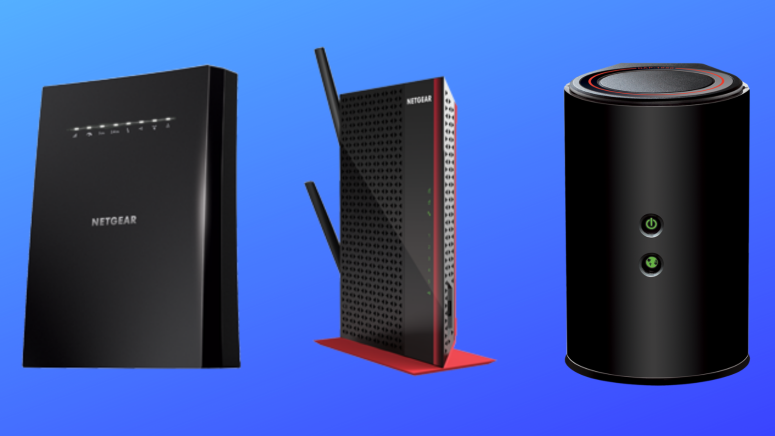
The Best Wi-Fi Extenders to Buy in 2020 — Maximize The Reach of Your Internet Connection
Wi-Fi extenders are important add-ons to your existing networking setup, especially if you have many devices at faraway locations at home or at the office. Due to the variable nature of a router's signal strength, having just a wireless router might not provide the needed coverage. If you're looking to spend heavily on a single router, it may be more prudent to opt for the best Wi-Fi extender and a capable Wi-Fi router for the same price so that you get a benefit of both speed and coverage.
Choosing the best Wi-Fi extender is not too difficult as long as you keep certain criteria in mind. It should be remembered that most Wi-Fi extenders can also act as access points, and some are even part of a mesh network for even more range. Generally, it is always recommended to opt for a dual-band setup or more. Having two bands greatly reduces the chances of interference and can also provide you with the band selection options for specific devices. The other important factor is speed. We generally find Wi-Fi extenders running at speeds slower than the router speed. This is to be expected, as are increased ping times. Therefore, choose a Wi-Fi extender that offers the highest speeds possible. Finally, the presence of Ethernet and USB ports, though not always needed, can greatly help in connecting other devices such as media servers directly.
Taking the above criteria into account, we have narrowed down on the 11 best Wi-Fi extenders of 2020 that can offer great value and performance for your money.
1. NETGEAR EX6200
- Features: Dual-band (2.4 + 5); Dual-core ARM CPU; Dual high-gain 5 dBi antennas; Beamforming+
- Wireless Protocols: 802.11ac
- Data Transfer Rate: 1.2 Gbps
- No. of Ethernet / USB Ports: 5 / 1 (1x USB 3.0)
- Dimensions (W x H x D): 12.01 x 10.12 x 3.19 in
The NETGEAR EX6200 is easily one of the best Wi-Fi extenders available in the market today. With the most recent software update, it can be used both as a standalone router as well as a range extender. The EX6200 is a dual-band router that offers a maximum throughput of 1.2 Gbps. It also has 5 Ethernet ports if you wish to go the wired route. The USB 3.0 port helps in connecting storage devices for sharing media files across the network.
This Wi-Fi extender rarely lags in day to day operations thanks to its dual-core ARM CPU. Coverage should not be a problem thanks to the presence of dual high-gain 5 dBi antennas. Installing and setting up the EX6200 is easy, but you might want to check for updates the first time you turn on the device.
While performance is not an issue, NETGEAR's support can be one. You get free 90-day phone support, but we'd advise you to check with NETGEAR as to what exact support options are applicable. There have also been a few issues in getting the router to work well with Apple and Sonos devices, but NETGEAR has released a few updates recently, which hopefully addresses the problem.
- Pros: Good speeds and coverage; Ample Ethernet ports
- Cons: NETGEAR support; Reported incompatibility with Apple and Sonos devices
2. NETGEAR EX3700
- Features: Dual-band (2.4 + 5); Dual adjustable antennas; AP Mode
- Wireless Protocols: 802.11ac
- Data Transfer Rate: 750 Mbps
- No. of Ethernet / USB Ports: 1 / 0
- Dimensions (W x H x D): 5.63 x 7.01 x 3.9 in
If speeds are not an issue, the NETGEAR EX3700 is one of the best Wi-Fi extenders under $50. You get dual adjustable antennas and a Gigabit Ethernet port for directly connecting your ISP's router. Therefore, you can use it in AP mode or as a Wi-Fi extender. Setting up the EX3700 is very easy, and the built-in software allows you to easily assign guest networks or configure connection options. The dual-band wireless AC offers up to 750 Mbps throughput — it is not very high but still should suffice if your main ISP line is less than this speed.
Setting up the router takes less than 2 minutes, but make sure to follow the instructions step by step. The NETGEAR EX3700 also offers a Fastlane feature that basically just isolates each band. It is of not much use when only a few devices are connected but may be useful in crowded homes. Do note that if your main router has a higher speed, you will not get that level of performance from this due to speed limitations. Expect increased ping times as well.
- Pros: Good value for money; Can work as dedicated AP
- Cons: Slower speeds than most routers; Extender mode can result in speed drops and increased ping times
3. NETGEAR Nighthawk Mesh X6S
- Features: Tri-band (2.4 + 5 + 5); Fastlane3; MU-MIMO; AP mode
- Wireless Protocols: 802.11ac
- Data Transfer Rate: 3 Gbps
- No. of Ethernet / USB Ports: 4 / 1 (1x USB 2.0)
- Dimensions (W x H x D): 8.1 x 10 x 5.2 inches
The NETGEAR Nighthawk Mesh X6S can work both as a mesh router and as a Wi-Fi extender. It offers excellent speeds and coverage thanks to its tri-band setup and can reach combined maximum speeds of up to 3 Gbps. The presence of the third band allows for wireless backhaul to the satellite to prevent speeds from reducing when multiple devices connect to the network. Unlike most wireless extenders, the Nighthawk X6S can extend the existing wireless network without the need to change the SSID. This means the clients can roam wherever the nodes are present without having to change the network often. NETGEAR's included software can help determine the signal strength at each node and can automatically select the best band and channel for the connected client.
While the Nighthawk X6S performs well without any hiccups, users have observed that it is better to set up the device in AP mode than in extender mode for maximum performance. Also, if you have configured WPS, you need to reconfigure it again for the 5 GHz band manually.
- Pros: Good performance and range; Dedicated band for wireless backhaul
- Cons: Works better in AP mode than extender mode; WPS needs to be configured separately for 5 GHz band
4. TP-Link RE650
- Features: Dual-band (2.4 + 5); 4 external antennas; 800 MHz CPU; Beamforming; Smart indicator lights for optimal placement
- Wireless Protocols: 802.11ac
- Data Transfer Rate: 2.6 Gbps
- No. of Ethernet / USB Ports: 1 / 0
- Dimensions (W x H x D): 3.0 x 6.3 x 1.8 in
At first glance, the TP-Link RE650 looks like a room freshener. But when you unfold the quad-antenna setup and you will see that this is a very capable Wi-Fi extender. The RE650 sports smart indicators that let you know at a glance when you connect to your host router. They glow red when the host is too far and blue when the distance is optimal, so you know that your placement is correct for the best possible range. The RE650 supports dual-band wireless-AC and offers up to 800 Mbps on the 2.4 GHz band and up to 1,733 Mbps on the 5 GHz band for a total theoretical output of 2.6 Gbps. The RE650 is great if you have many client devices to cater to as it features beamforming and support for MU-MIMO. There is no dedicated backhaul channel, but the device offers enough bandwidth that you won't really be needing it.
The performance of the TP-Link RE650 is excellent, and you can easily get an excellent range of up to 75 feet and covers about 14,000 sq. ft. without an appreciable drop in speed. An 800 MHz processor ensures that things perform smoothly without hiccups. There is no USB port, but a Gigabit Ethernet port is available. TP-Link offers the Tether app that allows you to control the Wi-Fi extender easily from your iOS or Android device. You can also adjust the signal strength or set the extender to turn on or off at defined timings. Overall, the TP-Link RE650 is one of the best Wi-Fi extenders with a good range. The only downside is that it is priced somewhat on the higher side, but it compensates that with excellent performance.
- Pros: Excellent range; Good number of customization options
- Cons: Large for a wall socket; Expensive
5. Google Wi-Fi System
- Features: Dual-band (2.4 + 5); 1,500 sq.ft. coverage per point; Network Assist; Family Wi-Fi controls
- Wireless Protocols: 802.11ac
- Data Transfer Rate: 1.2 Gbps
- No. of Ethernet / USB Ports: 2 / 0
- Dimensions (W x H x D): 4.2 x 4.2 x 2.7 in
The Google Wi-Fi system acts as both a wireless mesh network system and also as a capable Wi-Fi range extender. Google Wi-Fi is compatible with modems from all major internet providers, and each node of the system can provide coverage of up to 1,500 sq.ft. Setting up Google Wi-Fi is extremely simple, and the device has a Network Assist feature that does all the background work to select the best channel and band for the client devices. It also offers a companion app for easy delegation of guest access and overall performance of the network.
While Google Wi-Fi is compatible with most router systems, it works best with the Google OnHub routers. Do note that activation of the 5 GHz band might take some time, whereas the 2.4 GHz band is immediately available. This should be fixed in a future firmware update.
- Pros: Good speeds and coverage; Easy setup
- Cons: 5 GHz band does not get immediately activated
6. NETGEAR Orbi
- Features: Tri-band (2.4 + 5 + 5); Coverage up to 2.500 sq.ft. per node; Guest capability; Works with Amazon Alexa
- Wireless Protocols: 802.11ac
- Data Transfer Rate: 2.2 Gbps
- No. of Ethernet / USB Ports: 3 / 0
- Dimensions (W x H x D): 6.7 x 8 x 3.1 in
Like Google Wi-Fi, the NETGEAR Orbi is also a Wi-Fi mesh network system that works as a Wi-Fi extender. The Orbi provides coverage of up to 2,500 sq.ft. per node. Given such a large coverage area, you would need only about 2 nodes in total to cover most medium to large-sized homes. The Orbi supports wireless backhaul via the dedicated band to prevent any loss of bandwidth when additional nodes are added. With the built-in Alexa feature, you can easily create a guest network with a single voice command.
The Orbi has received good support in terms of new software features. The initial release of the Orbi firmware supported only wireless backhaul, but the most recent version supports Ethernet backhaul as well, which is somewhat rare. This means you can connect the individual nodes to an on-wall Ethernet port without having to congest the wireless network. Overall, if the high price isn't a problem, the NETGEAR Orbi is easily the best Wi-Fi extender available in the market today.
- Pros: Good coverage; Dedicated band for wireless backhaul
- Cons: Need to ensure that router and satellites are running the same updated firmware
7. D-Link DAP-1520
- Features: Dual-band (2.4 + 5); Easy setup; QRS Mobile App;
- Wireless Protocols: 802.11ac
- Data Transfer Rate: 750 Mbps
- No. of Ethernet / USB Ports: 0 / 0
- Dimensions (W x H x D): 2.2 x 3.6 x 1.4 in
If you're on a tight budget, the D-Link DAP-1520 is just what the doctor ordered. The DAP-1520 is a dual-band Wi-Fi extender that is easy to setup. Just plug into a wall socket, and you're ready to go. The speeds are not the highest out there, but given the price, we can overlook that.
The bundled QRS software helps in easily monitoring the DAP-1520. It does not offer some of the advanced controls found in costlier offerings, but it does offer some settings for traffic monitoring. There are no Ethernet or USB ports, so you can only use the DAP-1520 as a Wi-Fi extender and nothing else.
- Pros: Easy to set up and install
- Cons: Limited software functionality; No Ethernet or USB ports
8. D-Link DAP-1650
- Features: Dual-band (2.4 + 5); Range extender, Media Bridge, AP; QRS Mobile app;
- Wireless Protocols: 802.11ac
- Data Transfer Rate: 1.2 Gbps
- No. of Ethernet / USB Ports: 4 / 1 (1x USB 2.0)
- Dimensions (W x H x D): 4.3 x 5.7 x 3.6 in
The D-Link DAP 1650 is one of the best Wi-Fi extenders under $100. The design of the D-Link DAP resembles a small compact speaker. It is fairly well-equipped when it comes to features. You get dual-band wireless AC that offers speeds up to 1.2 Gbps. You also get 4 Gigabit LAN ports for wired connectivity along with a QRS app that enables you to control the extender from your mobile phone. The DAP 1650 can work as a range extender, media bridge, as an access point.
There is no external antenna on the DAP 1650, but the coverage should not be a problem. It is an excellent wireless extender when you consider the performance. The only gripe is that the automatic channel detection can sometimes result in interference from other neighboring routers broadcasting on the same channel.
- Pros: Very good speeds and coverage; Good aesthetics
- Cons: Signal interference due to auto channel selection
9. Linksys RE7000
- Features: Dual-band (2.4 + 5); 4 internal antennas; Push-button connect; Spot Finder technology; Crossband and Beamforming support
- Wireless Protocols: 802.11ac
- Data Transfer Rate: 1.9 Gbps
- No. of Ethernet / USB Ports: 1 / 0
- Dimensions (W x H x D): 3.2 x 4.9 x 1.7 in
The Linksys RE7000 is an aesthetically designed Wi-Fi range extender that compliments your living space well. The RE7000 plugs into the wall like an air freshener and is very compact. There are no external antennas, and there is only one indicator light available so the RE7000 can be hidden well in plain sight. The Linksys RE7000 is a dual-band wireless-AC range extender with a total throughput of 1.9 Gbps. Linksys offers Cross-Band technology that can send data to either of the best-suited bands automatically. Although the RE7000 supports any host router, you get Seamless Roaming when you link it with a Linksys Max-Stream router. Seamless Roaming allows you to move across different areas of your home without having to worry about signal strength. The single LED indicator light can let you know if you are at an optimal distance from your host router, thanks to Spot Finder technology. Support for beamforming and MU-MIMO ensures that multiple clients can be served simultaneously without bandwidth constraints. That being said, the RE7000 does not have a dedicated backhaul channel.
The performance of the RE7000 is great as expected. The antennas are internal and cannot be replaced, but the Wi-Fi range extender can cover a distance of 70 feet and about 10,000 sq. ft. so dead spots can be eliminated even in fairly big houses. Setting up the RE7000 is relatively hassle-free, and the software offers a fairly large number of customization options. You can also use Linksys's Android and iOS app for adjusting quick settings. The Linksys RE7000 is one of the best Wi-Fi extenders in the market below $100. Its overall performance is certainly not class-defining, but it does an excellent job of providing adequate Wi-Fi coverage across your home or office space.
- Pros: Good range; Easy to set up; Aesthetic design
- Cons: No backhaul channel
10. Plume SuperPods
Most Wi-Fi extenders come with a decent selection of built-in security features, but the Plume SuperPods take it a notch higher. The Plume SuperPods are designed for the highly security-conscious user who doesn't mind spending extra for added protection. The SuperPods come in a set of three units that can plug directly into any free wall outlet. The pods sport a very minimal design that has just one indicator light and a pair of Ethernet ports. How you would want to set up the pods is entirely up to you and depends largely on the size of your home. Setting up the Plume is relatively straightforward and can be done directly from your smartphone with the Plume app. Each pod can be assigned easily to recognize names such as Kitchen, Living Room, etc.
The SuperPods rely on AI to provide enhanced Wi-Fi coverage across your home or office. For example, if you mostly play games over the 'Living Room' network, the pods automatically assign more bandwidth to this network by learning your usage habits. The availability of advanced parental controls means that you now have complete control over your children's surfing habits. Plume offers cloud-based security features, which can be availed for a membership fee after the first year of a free trial. Features of this membership include cloud-based ad blocking, malware protection, and protection from cyberattacks. The subscription is what defines the Plume SuperPods as without the cloud security features, it is just another Wi-Fi extender. An additional feature is that the Plume SuperPods support a Home Pass feature. If you have guests coming over, you can grant them user access for a pre-defined time. If subscribing to an annual membership is not a big deal, the Plume SuperPods are the best Wi-Fi extenders for security-conscious users.
- Pros: Lots of security features; Home Pass; AI-enabled bandwidth and security controls
- Cons: Security features require an annual subscription
11. TRENDnet Wi-Fi Everywhere Powerline 1200 AV2
- Features: Dual-band (2.4 + 5); Powerline kit; Pre-encrypted Wi-Fi access; Wi-Fi clone; Beamforming
- Wireless Protocols: 802.11ac
- Data Transfer Rate: 1.2 Gbps
- No. of Ethernet / USB Ports: 2 / 0
- Dimensions (W x H x D): 5.11 x 10.04 x 2.95 in
It is not often that we see Powerline networking products these days, but the TRENDnet Wi-Fi Everywhere Powerline 1200 AV2 is an exception. Powerline is a technology that enables networking via the already existing electrical wiring inside your house. This provides better security, and there's no need to have wires dangling all over the place. The Powerline 1200 AV2 works on both Wi-Fi as well as Powerline. You can also purchase additional Powerline adapters as needed. The 1200 AV2 is not a very stylish Wi-Fi extender but gets the job done pretty adequately. Setting up the Wi-Fi and Powerline nodes is pretty straightforward, and successive Powerline nodes will auto-connect automatically once you plug them into the wall outlet.
Each Powerline node is capable of up to 1.2 Gbps total throughput speed. The speed largely depends on the quality of the wiring inside your house and the distance between each consecutive node. So, there is every possibility that you may experience slower speeds than advertised. It is not on par with Gigabit Ethernet but should get the job done. The main advantage is that creating a Powerline network is very easy and requires virtually no setup or drivers to install. TRENDnet includes a Wi-Fi clone feature that takes the network credentials from your router and uses them across each node. There is no MU-MIMO, but MIMO and Beamforming are supported so you can connect multiple clients easily over both 2.4 and 5 GHz bands. Performance-wise, there is not much to complain about. As long as the internal wiring in your house is good, you can expect great wired and wireless speeds as advertised. If you are looking for the best Wi-Fi extender that also doubles up as a Powerline solution, the TRENDnet W-Fi Everywhere is one of the best in the market.
- Pros: Extremely easy connectivity; Powerline support
- Cons: No real advantage compared to other extenders
Dear readers, that would be all for our list of the best Wi-Fi extenders to consider buying today. As always, it is important that you take a good estimate of the required coverage and speeds before investing in a Wi-Fi range extender. If your devices do not require high-speeds or support only older wireless bands, it makes no sense to invest in a high-extender.












